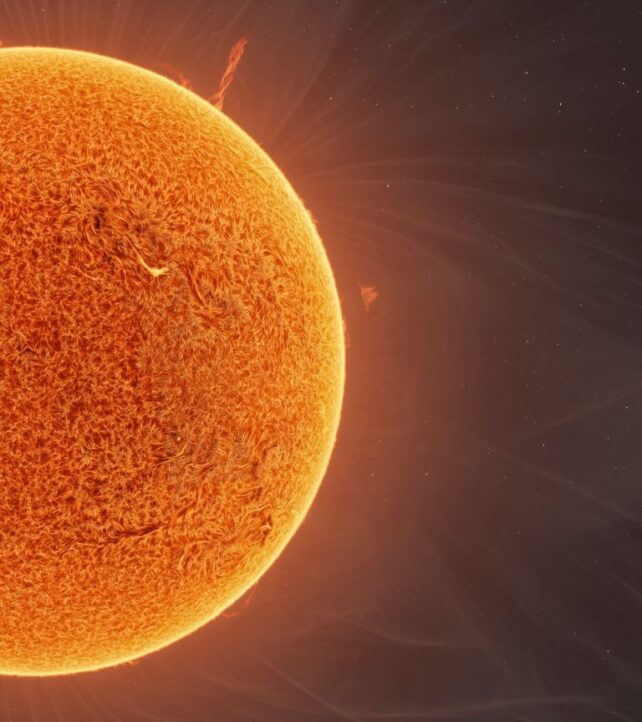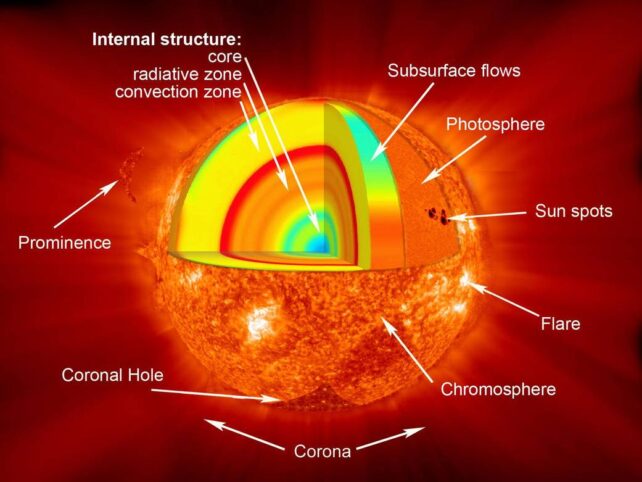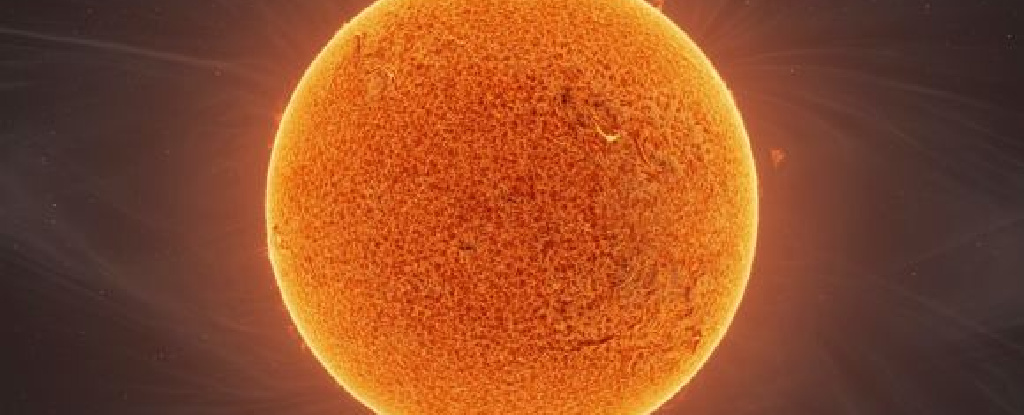Amateur astrophotography is growing in popularity in the astronomy community as advances in telescope and camera technology allow individuals from all walks of life to observe the sky in stunning detail, including our own Sun, albeit with the right protective gear.
This was recently reported by Andrew McCarthy (Twitter @AJamesMcCarthy), which owns and operates Cosmic background studiosand is originally from Northern California but currently resides in Florence, Arizona.
On March 18, 2023 McCarthy tweeted a video of what appeared to be a tornado on the sun’s surface.
I spent 3 hours yesterday pointing my solar telescope at a large tornado-like thing on the sun. This 14-Earth-tall, swirling plasma column rained moon-sized blobs of incandescent material onto the sun. I can’t imagine a more hellish place. pic.twitter.com/dewzNEAEJA
— Andrew McCarthy (@AJamesMcCarthy) March 18, 2023
Although this feature doesn’t look that big, McCarthy provides a stack of 14 Earths for scaling within the video to show the gargantuan size of this tornado-like monstrosity. But while tornadoes are commonplace on Earth, what’s happening on the sun’s surface to create such a unique phenomenon?
“This is a solar prominence in the Sun’s chromosphere,” McCarthy recently told Universe Today. “A mass of plasma trapped in a magnetic loop, pulling it away from the photosphere and over a hundred thousand miles into space. Solar material ‘rains’ off the prominence back into the Sun.”
McCarthy told Universe Today that this sequence was imaged with a modified telescope capable of observing the Sun’s atmosphere in what is known as the atmosphere Hydrogen Alpha Band Hundreds of thousands of images were used over a few hours, and he says this was no chance encounter as he monitors the Sun’s behavior on a daily basis.
“Each frame of the video was a stack of about 500 individual images,” McCarthy tells Universe Today. “The feature was relatively faint against the much brighter solar disk, so it was difficult to resolve the contrast against the glare differently.”
Along with the video, McCarthy collaborated with colleague Jason Guenzel (Twitter @TheVastReaches) to create a stunning 140-megapixel still image of the sun with the tornado at the top of the image, with McCarthy telling Universe Today that this image “provides a dramatic view of the chromosphere and solar corona.”

McCarthy mentions a few layers of the sun, including the solar lobe, chromosphere, photosphere, and corona. Because while the sun appears to be a unified structure on the surface, it contains layers, just like Earth and other celestial objects.
The photosphere is the visible surface of the sun that we see daily and in astronomical observations. It’s about 100 kilometers thick, which is tiny compared to the Sun’s diameter, which is about 1,400,000 kilometers, and has a temperature range from 3700 to 6200 degrees Celsius.

The chromosphere is known as an irregular layer located above the photosphere, about 2500 kilometers thick and with a temperature range of 6000 to 20,000 degrees Celsius. sun ledges are the large, bright features emanating from the Sun, such as the tornado-like feature pictured by McCarthy, and have temperature ranges from 4,700 to 50,000 degrees Celsius.
The solar corona comprises the outer atmosphere of the sun and has the highest temperature at 2 million degrees Celsius. The corona is only visible during solar eclipses, and McCarthy told Universe Today that data from the Solar and Heliospheric Observatory and an image by Günzel of the 2017 total solar eclipse were combined to create these images.
Be sure to check out the amazing astrophotography by Andrew McCarthy and Jason Guenzel on their respective Twitter pages and websites (listed below) and Please avoid looking directly at the suneither during an eclipse or not, without proper eye protection or telescopic solar filters.
This article was originally published by universe today. read this original article.





